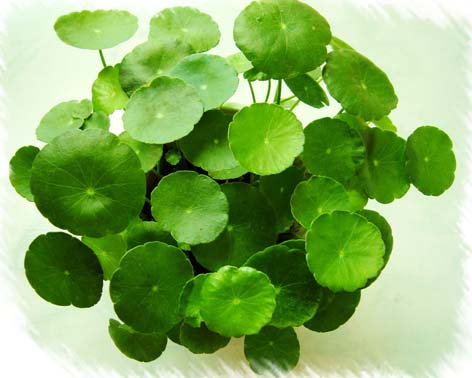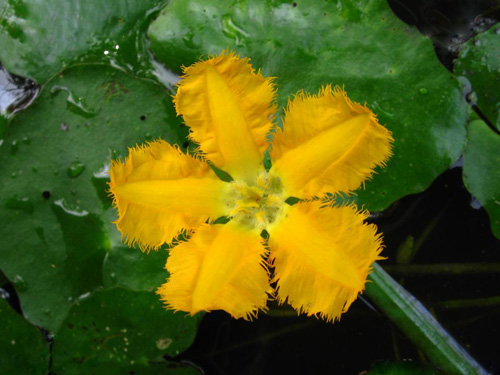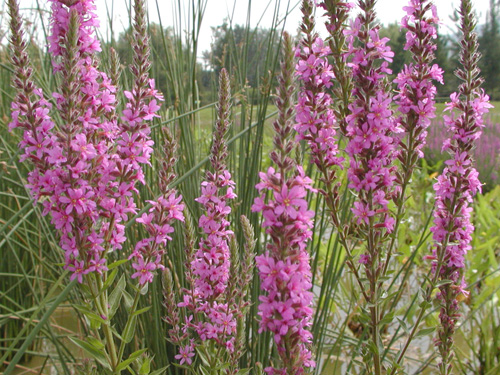Cultivation and management methods of Lentinus edodes (Lentinus edodes, coriander)
Lentinus edodes grass (copper money grass, South American coriander)
Scientific name: hydrocotyle vulgaris
Alias: common coriander, money lotus, water money, copper money grass
Morphological features: perennial water or wet herbs, with trailing nature, 5-15 cm high. The nodes often take root, the top of the stem is brown, leaves alternate, long stalked, round shield-shaped, margin wavy, grass green, leaf veins 15-20 radial. Umbels with white florets.
Ecological habits: strong adaptability, like the environment with sufficient light, such as shaded environment, the plant growth is poor. Sex likes warmth, is afraid of cold, grows well in the temperature range of 10 degrees Celsius to 25 degrees Celsius, and the overwintering temperature should not be lower than 5 degrees Celsius. Shade-tolerant, wet-tolerant, slightly drought-tolerant, half-day sunshine is the best cultivation.
Propagation methods: more use of stolon cutting propagation, mostly in March to May every year, easy to survive. It can also be sown and propagated.
Cultivation and management: suitable for growing in fertile soil, requiring sufficient water, can be cultivated in pots without drainage holes at the bottom to maintain sufficient water, and can be planted in glassware or other flowerpots for beauty.
Florescence: June to August.
Flower words: tenacious and tenacious.
Garden uses: water bank cluster planting, slice planting, water plate, aquarium, pool, wetland, potted plant.
Species identification: the same shield-shaped leaves of different families of plants-mirror grass (mirror palm) pilea peperomioides Urticaceae perennials, leaves fleshy, entire, petiole length not -, stretching around, often potted for indoor foliage flowers.

There is a kind of plant whose leaves are round or kidney-shaped, just like ancient copper coins, so it is called Hydrocotyle vulgaris, and it has many nicknames. Such as: snow grass, big leaf money grass, avalanche big bowl, ground line grass, old man root, sunflower vegetable, collapse mouth bowl, begging bowl, ground clover grass, big horseshoe grass, soil Asarum, money chisel half money, duckweed, wild winter cauliflower, pan dragon grass, joint even, big leaf muscle grass, cucumber grass, plum blossom, mushroom, water money, South American coriander, money money and so on. Next, let's introduce the copper grass:
First, the introduction of copper grass.
Chimonanthus, a perennial creeping herb of the genus coriander in the Umbelliferae, is 5-15 cm tall, often curled into a ball, with slender stems, rooting at nodes, well-developed stems, roots and leaves at internodes, round or reniform peltate leaves, long stalks, wavy edges, and densely attached T-shaped hairs on the back. The Corolla is bell-shaped yellow with small yellowish-green flowers in summer and autumn. Fruit July, capsule subglobose. Originated in India, it is widely distributed in the tropical and subtropical regions of the world, and in China, it is mainly distributed in the provinces south of the Yangtze River. Tongqian has strong grass nature, strong spreading ability, easy planting, rapid reproduction, amphibious and amphibious.
Second, the maintenance of copper grass
Tongqian grass likes warm and humid climate, so it is better to cultivate in half-day sunshine or shade, avoid direct sunlight, and have little requirement for cultivated soil, generally with soft and well-drained cultivated soil. Rabdosia angustifolia is resistant to shade, humidity, drought and strong adaptability. Therefore, the maintenance should pay attention to the following points:
The main results are as follows: 1. The optimum water temperature for the growth of Rabdosia angustifolia is 22-28 degrees. Because the plant can tolerate moisture and stand up to water, it can be cultivated in water basin and pool. But if you raise water, be sure to change the water once a week and add a special nutrient solution for foliage plants.
2. The plant of Rabdosia angustifolia is small and does not need a large pot. the soil uses general vegetable garden soil, mixed with some river sand and a small amount of organic fertilizer as base fertilizer.
3, the cultivation of Tongqian grass can be planted flat, the rhizome slightly covered invisible as well, do not be too deep. See the sun when the new leaves grow in the semi-shade.
4. Rabdosia angustifolia is not resistant to cold, so it is necessary to dump all the water outside in winter and put it in a place facing south and leeward, so that it can survive the winter, but some of the leaves will die, but the underground roots will sprout again next spring. If you are in a cold area in the north and there is no heating, you can make a cover with a basin, pour out the water and keep it moist. As long as the room temperature is not lower than zero, it will continue to grow in the coming year.
5. If you encounter yellowing of leaves in the process of cultivation, you can consider whether it is not watered thoroughly or too much, frozen, sudden change of room temperature, unable to adapt, poor ventilation, poor photosynthesis and other reasons.
Third, the function of copper grass.
Codonopsis lanceolata can be used for greening because its underground stem grows at an amazing rate and spreads wherever it goes. It is one of the beautiful and easy-to-grow aquatic plants. In addition, the whole herb can be used as medicine, with diuretic effect, roots and leaves can be used as vegetables; it can also be used as traditional Chinese medicine to cure wind, solidify intestines, clear eyes and clear summer heat, and so on.
An introduction to Codonopsis pilosula
Click on the picture to go to the next page > >
There is a kind of plant whose leaves are round or kidney-shaped, just like ancient copper coins, so it is called Hydrocotyle vulgaris, and it has many nicknames. Such as: snow grass, big leaf money grass, avalanche big bowl, ground line grass, old man root, sunflower vegetable, collapse mouth bowl, begging bowl, ground clover grass, big horseshoe grass, soil Asarum, money chisel half money, duckweed, wild winter cauliflower, pan dragon grass, joint even, big leaf muscle grass, cucumber grass, plum blossom, mushroom, water money, South American coriander, money money and so on. Next, let's introduce the copper grass:
First, the introduction of copper grass.
Chimonanthus, a perennial creeping herb of the genus coriander in the Umbelliferae, is 5-15 cm tall, often curled into a ball, with slender stems, rooting at nodes, well-developed stems, roots and leaves at internodes, round or reniform peltate leaves, long stalks, wavy edges, and densely attached T-shaped hairs on the back. The Corolla is bell-shaped yellow with small yellowish-green flowers in summer and autumn. Fruit July, capsule subglobose. Originated in India, it is widely distributed in the tropical and subtropical regions of the world, and in China, it is mainly distributed in the provinces south of the Yangtze River. Tongqian has strong grass nature, strong spreading ability, easy planting, rapid reproduction, amphibious and amphibious.
Second, the maintenance of copper grass
Tongqian grass likes warm and humid climate, so it is better to cultivate in half-day sunshine or shade, avoid direct sunlight, and have little requirement for cultivated soil, generally with soft and well-drained cultivated soil. Rabdosia angustifolia is resistant to shade, humidity, drought and strong adaptability. Therefore, the maintenance should pay attention to the following points:
The main results are as follows: 1. The optimum water temperature for the growth of Rabdosia angustifolia is 22-28 degrees. Because the plant can tolerate moisture and stand up to water, it can be cultivated in water basin and pool. But if you raise water, be sure to change the water once a week and add a special nutrient solution for foliage plants.
2. The plant of Rabdosia angustifolia is small and does not need a large pot. the soil uses general vegetable garden soil, mixed with some river sand and a small amount of organic fertilizer as base fertilizer.
3, the cultivation of Tongqian grass can be planted flat, the rhizome slightly covered invisible as well, do not be too deep. See the sun when the new leaves grow in the semi-shade.
4. Rabdosia angustifolia is not resistant to cold, so it is necessary to dump all the water outside in winter and put it in a place facing south and leeward, so that it can survive the winter, but some of the leaves will die, but the underground roots will sprout again next spring. If you are in a cold area in the north and there is no heating, you can make a cover with a basin, pour out the water and keep it moist. As long as the room temperature is not lower than zero, it will continue to grow in the coming year.
5. If you encounter yellowing of leaves in the process of cultivation, you can consider whether it is not watered thoroughly or too much, frozen, sudden change of room temperature, unable to adapt, poor ventilation, poor photosynthesis and other reasons.
Third, the function of copper grass.
Codonopsis lanceolata can be used for greening because its underground stem grows at an amazing rate and spreads wherever it goes. It is one of the beautiful and easy-to-grow aquatic plants. In addition, the whole herb can be used as medicine, with diuretic effect, roots and leaves can be used as vegetables; it can also be used as traditional Chinese medicine to cure wind, solidify intestines, clear eyes and clear summer heat, and so on.
- Prev

The Culture method of Artemisia angustifolia
Nymphoidespeltatum: Gentianaceae: Gentianaceae. Morphological characteristics: perennial floating herbs. Long branches prostrate on the bottom of the water, and short branches grow from the nodes of the long branches. Leaves ovate, base parted into heart-shaped. Umbels born in leaf axils with large and conspicuous flowers
- Next

Cultivation and management methods of Qianqu (Fraxinus mandshurica)
Scientific name: lythrumsalicaria alias: Fraxinus mandshurica, Fraxinus mandshurica, Liriodendron chinense, Hemargoniaceae, Genus: Chloridaceae; morphological characteristics: perennial herbs. Stem erect, quadrangular. Leaves opposite or 3 whorls, sessile, narrowly lanceolate
Related
- Fuxing push coffee new agricultural production and marketing class: lack of small-scale processing plants
- Jujube rice field leisure farm deep ploughing Yilan for five years to create a space for organic food and play
- Nongyu Farm-A trial of organic papaya for brave women with advanced technology
- Four points for attention in the prevention and control of diseases and insect pests of edible fungi
- How to add nutrient solution to Edible Fungi
- Is there any good way to control edible fungus mites?
- Open Inoculation Technology of Edible Fungi
- Is there any clever way to use fertilizer for edible fungus in winter?
- What agents are used to kill the pathogens of edible fungi in the mushroom shed?
- Rapid drying of Edible Fungi

